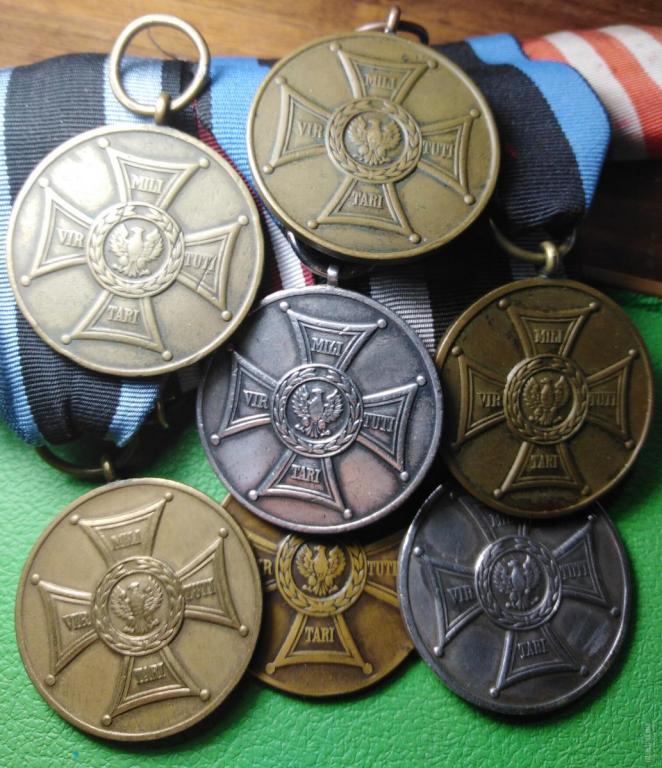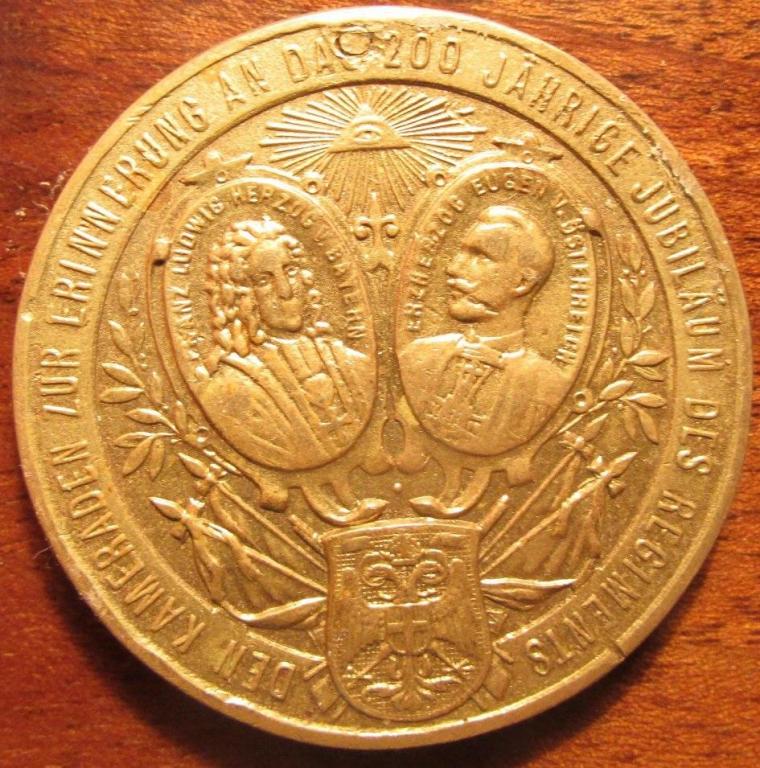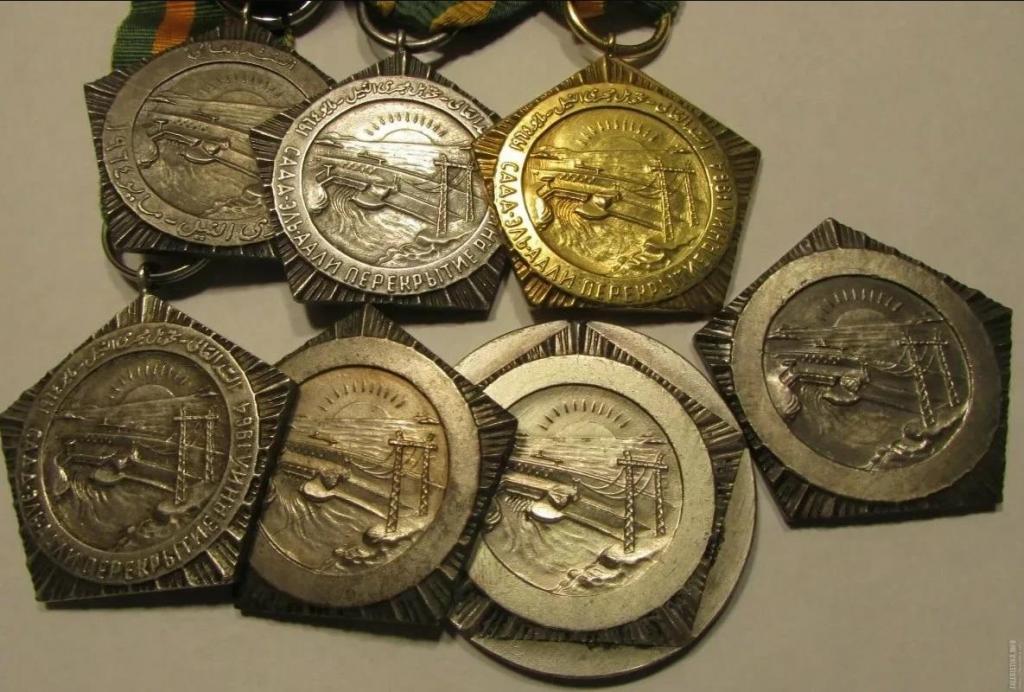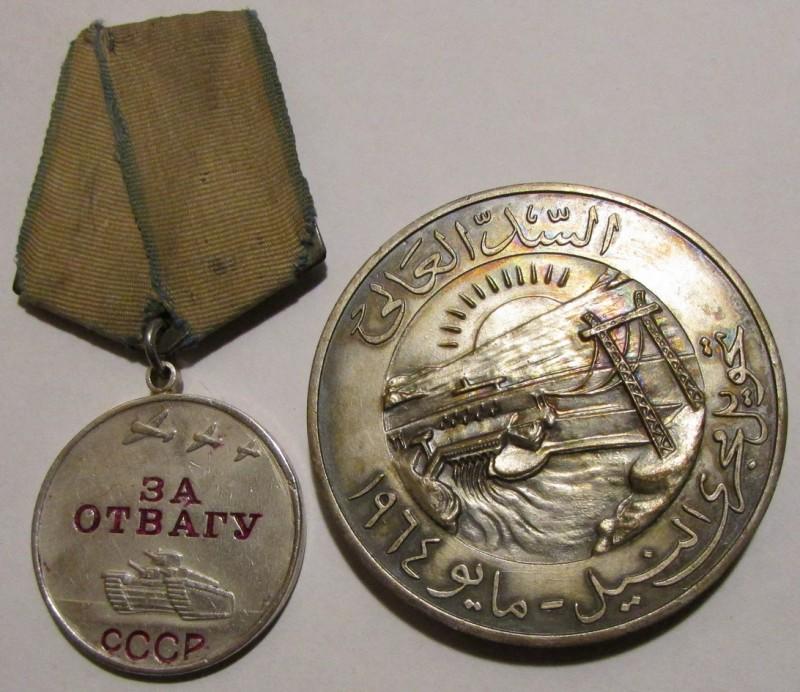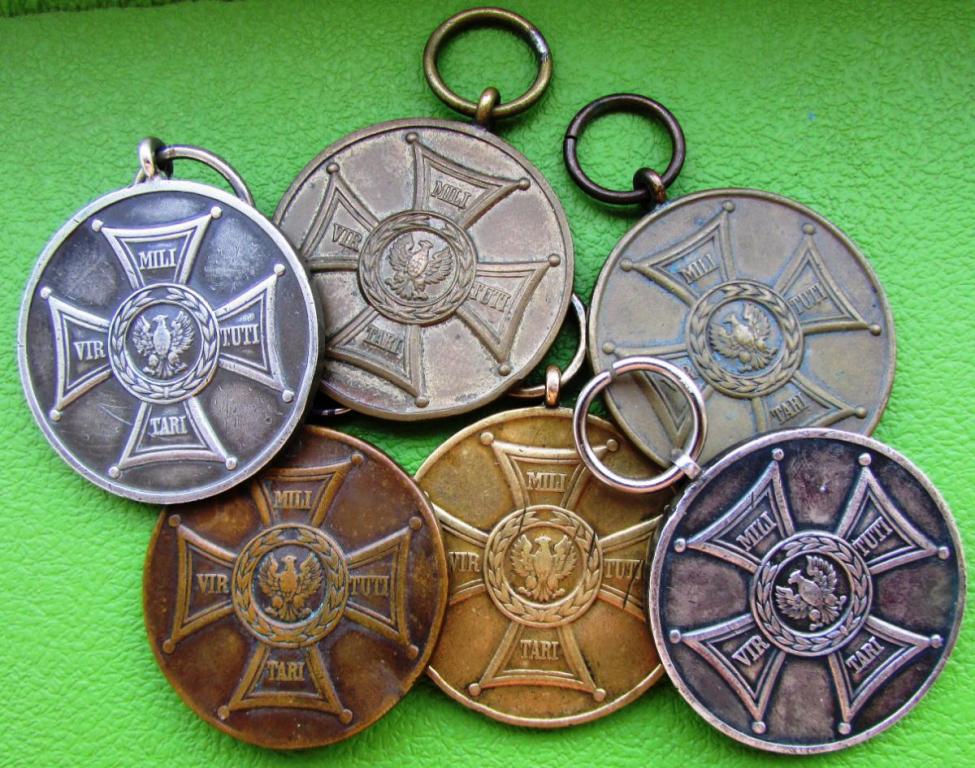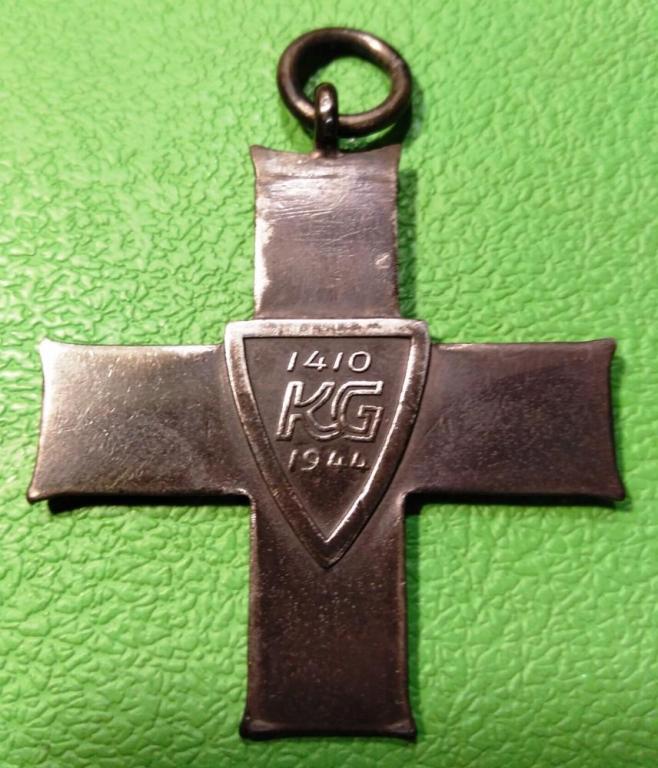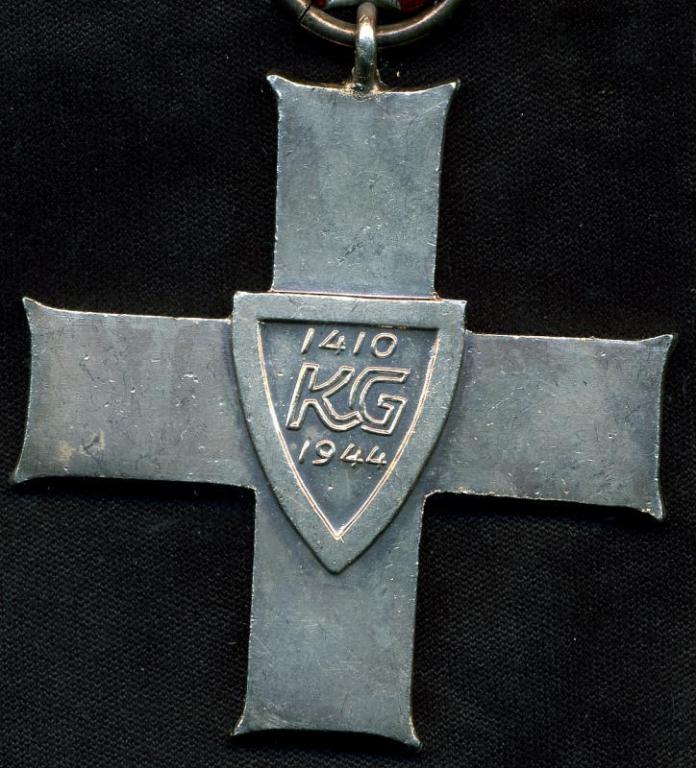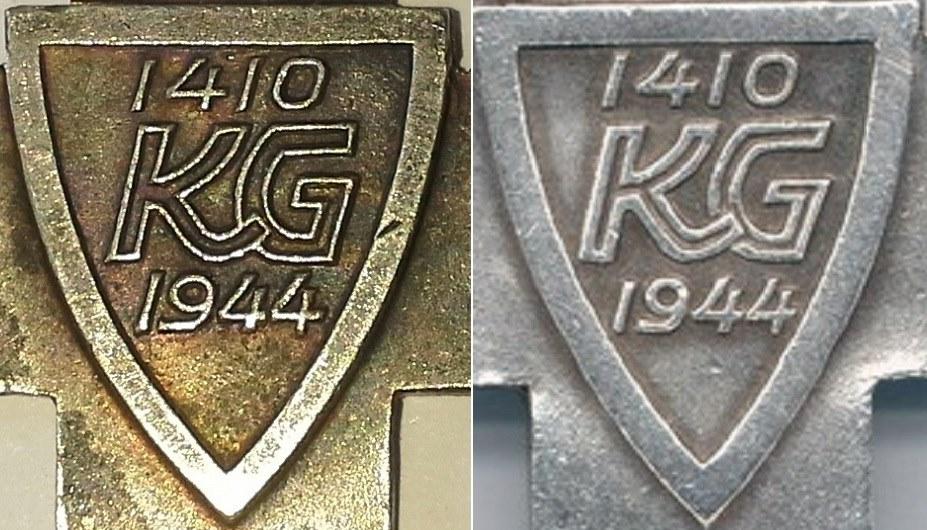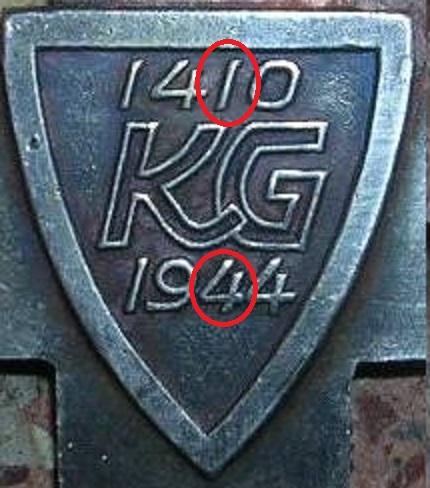
chechaco1
Active Contributor-
Posts
202 -
Joined
-
Last visited
-
Days Won
2
Content Type
Profiles
Forums
Blogs
Gallery
Events
Store
Everything posted by chechaco1
-
Badge of the Life-Guards Volynsky Regiment
chechaco1 replied to WJT's topic in USSR: Soviet Orders, Medals & Decorations
В. (Василий или Владимир) - name ЛашинЪ - second name (фамилия) -
unauthorized wear of orders and medals
chechaco1 replied to podpolkovnik's topic in USSR: Soviet Orders, Medals & Decorations
Fine and withdrawal. The norm was introduced during the war, as criminals stole awards and used them for fake begging or bandit raids, then the topic subsided and was again raised by the decree of 11.03.1985. -
Soviet Afghanistan warrior medals
chechaco1 replied to SovPha's topic in USSR: Soviet Orders, Medals & Decorations
The army jubilee badge of 1988 and the "Warrior-Internationalist" badge are missing at least. -
Lets see your Soviet Civil Awards Groups
chechaco1 replied to Paul R's topic in USSR: Soviet Orders, Medals & Decorations
The order of the awards is broken, there is an incorrect winding of the tape. -
is the russian army still using soviet cockades?
chechaco1 replied to podpolkovnik's topic in Russian Federation
The cockades were changed. But the buckles (badges) of belts are often used by ordinary and non-commissioned officers of the Soviet Union. -
POLISH MEDAL MILITARI VIRTUTI
chechaco1 replied to SovPha's topic in Central & Eastern European States
-
Austria-Hungary Austrian Balkan Wars 1912-13 cross
chechaco1 replied to makedon's topic in Austro-Hungarian Empire
Marked with color (circled the location of the regiment) green - more than 140 crosses per regiment light green-from 120 to 140 crosses per regiment light brown-from 100 to 120 yellow - from 80 to 100 pink-from 60 to 80 orange - from 40 to 60 red - from 20 to 40 empty field (black circle on the map) - from 0 to 20. The first mass-scale in terms of the number of Mobilization Crosses awarded is the border green-light green-light brown belt of the Russian-Serbian and the red - black belt, which tends to zero, is the rear one. That is, the most decorated regiments on the Russian and Serbian borders. But the Romanians were not afraid, the border with them is black and red, which is remarkable. Italians are also black. In general, the picture corresponds to the political situation - the numbed Austria-Hungary, while mobilizing in case of possible intervention in the conflict of the Slavic peoples, paid special attention to the sections of the Russian and Serbian borders, being calm beyond the borders of the German Empire, Italy, and Romania. -
Definitely not the Russian style of manufacturing
-
AUSTRIA. NO 4 INFANTRY REGT. 200 YEARS JUBILEE 1696-1896 MEDAL
chechaco1 replied to numis's topic in Austro-Hungarian Empire
-
Help Officer rank stars 70's -80's
chechaco1 replied to Euronymous's topic in USSR: Soviet: Other Militaria
Stars of this type were used from the mid-1950s to the mid-90s, multi-million copies of various productions. It's all right, don't doubt it. To look for nuances in them is a thankless task, there were bags in the stores of the military trade. And they molded what they had on a pile of uniforms, and they rolled them over from the old shoulder straps,and bought new ones. The Soviet Army did not pay attention to this - to the multicolored appearance and so on. Regular hardware. -
Surface ship 5-digital designation of the warhead (letter designation of the service); five, usually electricians. 3 - number of the combat post; 21-the digital designation of the combat shift, where: 2 - number of the combat shift; 1 - the serial number of the petty officer, the sailor in the combat shift.
-
Distinguished themselves ................sappers of Major General Kosarev. And thanks to the Georgian-Demetrashvili.
-
Soviet Guards LTC and a polish Master Corporal
chechaco1 replied to SovPha's topic in USSR: Soviet: Other Militaria
The corporal's penultimate medal is "Oder-Neisse-Baltika", the last Soviet medal "For the victory over Germany". The cross of the Brave is seen as a Soviet-made cross, a Scherbinka, a mechanical stamping plant. -
100-й танковый Честноховский Краснознаменный ордена Кутузова полк Рус: 100-й танковый Ченстноховский Краснознамённый ордена Кутузова полк
-
Of the Aswan medals using a pentagonal design on the suspension, there were bilingual - gold and silver, Arabic - silver and copper/bronze. The rest of the medals were awarded to the members of the delegations as commemorative ones. It was not possible to find out who was awarded the round medal of the Bank of Egypt.
-
Medal "For the Development of Virgin Lands"
chechaco1 replied to SovPha's topic in USSR: Soviet Orders, Medals & Decorations
The first type is a flat ear. -
Unknown Ribbon on Soviet Bar
chechaco1 replied to John F.'s topic in USSR: Soviet Orders, Medals & Decorations
Absolutely someone else's" left " tape, should be pure red in this place. -
Poland Poland Partisan Cross - Krzyz Partyzancki
chechaco1 replied to IrishGunner's topic in Central & Eastern European States
This is the Partisan Cross of the third type, for awarding members of the Home Army. The first type of cross was made by Grabsky's company from 1945 to 1951, about 12 thousand crosses with a small eagle head and a low dense font. Then there were crosses with rounded edges of the ear and from 1990-with sharp edges of the ear. According to the calculations of researchers on the topic of the Polish Partisan cross, during the years of people's power in Poland from 1945 to 1989, 76664 Partisan crosses were issued, and then the anti-people authorities awarded these crosses to "wrong" partisans who collaborated with the British administration: 1990-1,862 people, 1991-723 people, 1992-1,140 people, 1993-1,325 people, 1994-1,658 people, 1995-5,267 people, 1996-2,167 people, 1997-939 people, 1998-975 people, 1999-1,330 people, In total-17,386 people, and in total with the" people's partisans " 94050 people. According to the Bureau of State Awards of the Office of the State Council and the Bureau of Awards of the Administration of the Polish President, 75,374 crosses were given until 1987, and then an additional 18,651 crosses – 94,025 in total. In principle, the error of the discrepancy between the two statistics is small - 25 crosses per 94 thousand... not even a penny, a trifle. The war had been over for 50 years, and the heroic Polish partisans were still coming out of the woods and lining up to receive the award. As with the Grunwald Sign, new participants in the struggle appeared, and the further away from the war, the more they became. -
Poland The Grunwald Awards of Poland.
chechaco1 replied to Gordon Craig's topic in Central & Eastern European States
The first type of medal until 1975. The number of awards in this period, as they say, is small, just over a thousand people, but, surprisingly, the medal is often found and inexpensive, about 20-30 dollars. -
POLISH MEDAL MILITARI VIRTUTI
chechaco1 replied to SovPha's topic in Central & Eastern European States
-
About half a million people.
-
It is even easier to determine the real type of "straight fours" - the narrow frame of the shield on the reverse, the date 1410 is not close to the contour of the shield (in the picture I showed it with red arrows) and, most importantly, in the upper bend of the letter" G " - it is chipped, there is no piece, the corner is taken out. All the others - the "thick frame" - are late products, they are called crosses of 1985, but there is no evidence of their manufacture on the Warsaw Mennitsa, as well as clear evidence of their delivery. The rewards are not exorbitant and the probability that a fake cross was placed under the original document is high.
-
The Grunwald cross of the 3rd class was originally made in the USSR at the Krasnokamsk Mint. In two types - "bent fours" and "straight fours" - the more common type. Krasnokamsk Mint-KMD recaptured the 19691 cross of the third degree in 1945. According to Stefan Oberleitner (Polskie Ordery i odznaczenia tom II), crosses of the third degree were issued 1943-50 - 4219 crosses 1951-60 - 139 crosses 1961-70 - 337 crosses 1971-80 - 417 crosses 1981-87-29 crosses Total: 5,141 crosses of the third degree for the period 1943-1987. We get 14,550 non-issued crosses produced by KMD. This stock will not significantly decrease, if you believe the data of Wojciech Stela, who writes that during the period 1944-1991. 5389 crosses of the third degree were issued. This topic shows the Crosses of Grunwald of Polish production, stamped it is not clear for what purposes by the Poles, since the USSR stamped more than it was awarded Both the first type and the second type are forged. Here, for example, is a fake of the first, rare type of "oblique fours" - the original on the right. Pay attention to the unit in 1944 - it is larger than the nine. Well, the 1410 unit is longer. There are other differences. As a rule, copies that are trying to pass off as originals have an ear broken off. And, yes, the shield on the reverse is identical to the shield on the reverse of the Class 2 Grunwald.

